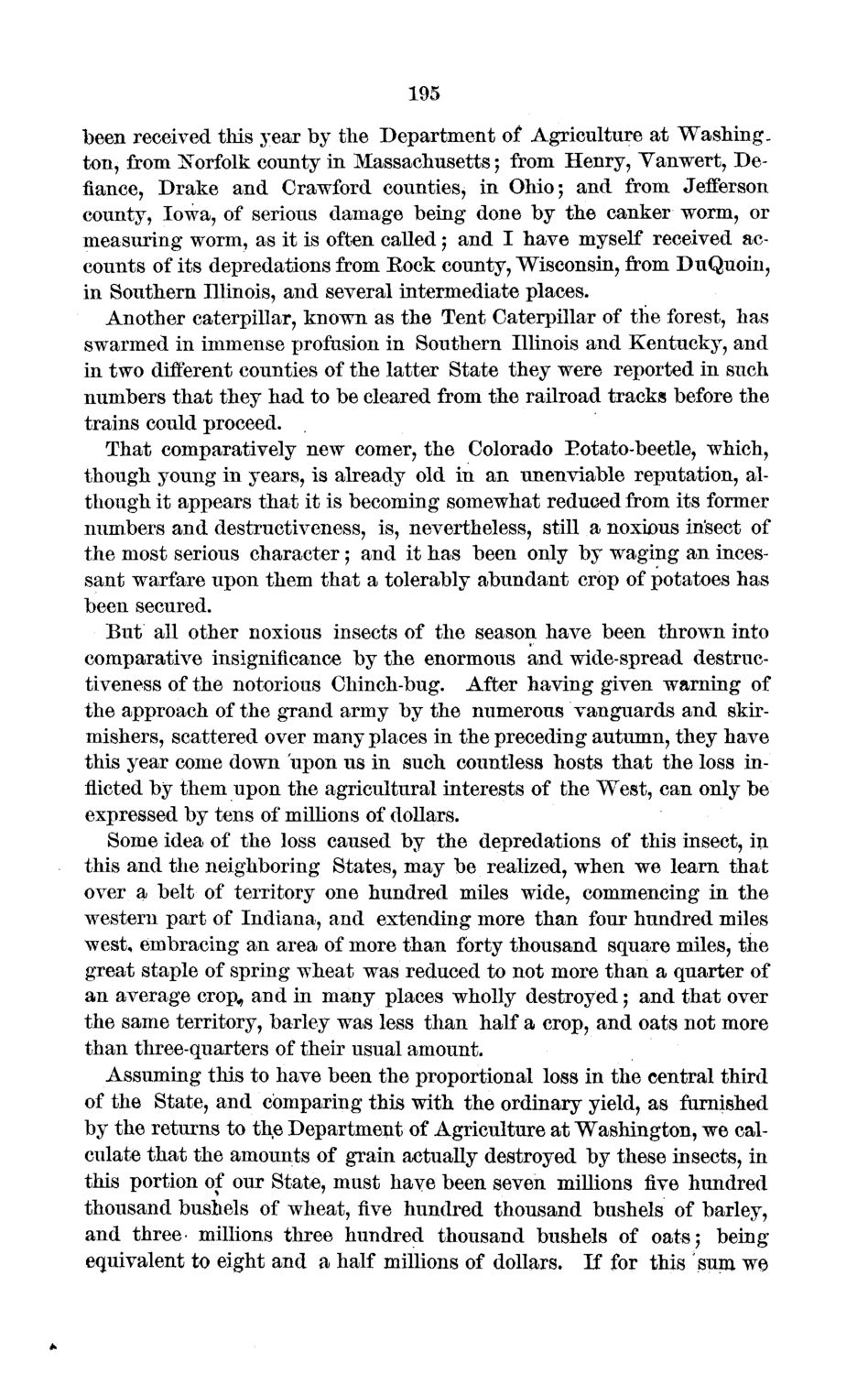| |
| |
Caption: Board of Trustees Minutes - 1872
This is a reduced-resolution page image for fast online browsing.

EXTRACTED TEXT FROM PAGE:
195 been received this year by the Department of Agriculture at Washing, ton, from Norfolk county in Massachusetts; from Henry, Yanwert, Defiance, Drake and Crawford counties, in Ohio; and from Jefferson county, Iowa, of serious damage being done by the canker worm, or measuring worm, as it is often called; and I have myself received accounts of its depredations from Eock county, Wisconsin, from DuQuoin, in Southern Illinois, and several intermediate places. Another caterpillar, known as the Tent Caterpillar of the forest, has swarmed in immense profusion in Southern Illinois and Kentucky, and in two different counties of the latter State they were reported in such numbers that they had to be cleared from the railroad tracks before the trains could proceed. That comparatively new comer, the Colorado Potato-beetle, which, though young in years, is already old in an unenviable reputation, although it appears that it is becoming somewhat reduced from its former numbers and destructiveness, is, nevertheless, still a noxious insect of the most serious character; and it has been only by waging an incessant warfare upon them that a tolerably abundant crop of potatoes has been secured. But all other noxious insects of the season have been thrown into comparative insignificance by the enormous and wide-spread destructiveness of the notorious Chinch-bug. After having given warning of the approach of the grand army by the numerous vanguards and skirmishers, scattered over many places in the preceding autumn, they have this year come down upon us in such countless hosts that the loss inflicted by them upon the agricultural interests of the West, can only be expressed by tens of millions of dollars. Some idea of the loss caused by the depredations of this insect, in this and the neighboring States, may be realized, when we learn that over a belt of territory one hundred miles wide, commencing in the western part of Indiana, and extending more than four hundred miles west, embracing an area of more than forty thousand square miles, the great staple of spring wheat was reduced to not more than a quarter of an average crop,, and in many places wholly destroyed; and that over the same territory, barley was less than half a crop, and oats not more than three-quarters of their usual amount. Assuming this to have been the proportional loss in the central third of the State, and comparing this with the ordinary yield, as furnished by the returns to the Department of Agriculture at Washington, we calculate that the amounts of grain actually destroyed by these insects, in this portion of our State, must have been seven millions five hundred thousand bushels of wheat, five hundred thousand bushels of barley, and three- millions three hundred thousand bushels of oats; being equivalent to eight and a half millions of dollars. If for this sum we
| |